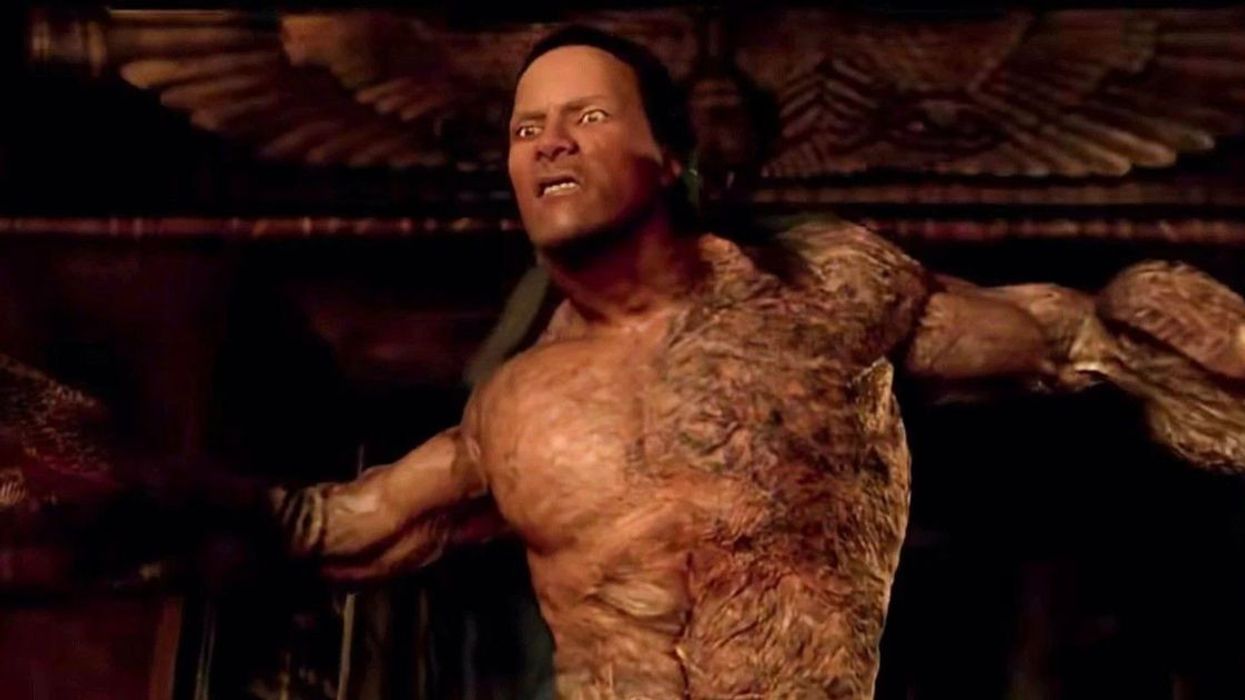This Veteran VFX Supervisor Explains What Went Wrong with the Scorpion King's CGI
John Berton Jr. shares how you can avoid the pitfalls of very bad VFX.

In a recent episode of Corridor Digital’s YouTube Series VFX Artists React #78, hosts Wren Weichman and Niko Pueringer talked to VFX ILM Supervisor and industry veteran John Berton Jr. about the early days of CGI. Berton has worked on a variety of iconic projects, including Terminator 2, Willow, Pirates of the Caribbean, and Jurassic Park, to name a few.
However, in what even Berton considers a dark moment in his career, he was the visual effects supervisor for what has been considered the worst visual effects shot ever—the Scorpion King from TheMummy Returns.
Sitting down with the gang from Corridor Crew, Berton explained why the CGI character of the Scorpion King ended up looking so bad and why it didn’t hold up, even when the film was released. Check out their video below.
The Importance of Reference
While we may be able to blame the infancy of the technology at the time, Berton's explanation is a bit more about fundamentals.
He stated that his CGI team couldn’t get enough reference material of actor Dwayne Johnson to create the Scorpion King CGI model. Johnson’s schedule was packed with WWE events at the time, so he wasn’t available to create a comprehensive scan of his torso.

Also, the follow-up spin-off film The Scorpion King starring Johnson hadn’t come out yet, so the team had to rely on reference material that was limited to a few days of principal photography of the actor while on the set of The Mummy Returns.
Those not artistically inclined may at first believe that talented artists create from scratch, but that is far from the truth. Even masters of bygone eras used reference material to create their masterpieces.
It is an important foundation for all art, and while yes, you may create something out of your imagination, making something look realistic almost always requires reference material.
Old Problems, a Modern Fix
These days, Corridor Crew would simply scour the internet for images and use the footage from Johnson’s Scorpion King film to train a deep fake of the actor overlaid on the topic of the effect.
They did that in a separate video, and the results are far more realistic. You can see that here.
However, back in 2001, deep faking didn’t exist. In fact, CGI characters were barely in their infancy. This was really evident in the lack of microgeometry skin texture that was missing from the Scorpion King CGI model. As a result, the CGI scan looked cartoony and plastic-like, especially when up close.
The irony is that the action shots from a distance looked okay because they were either seen from a distance or in the midst of movement, which covered up imperfections. But as the camera gets closer, the model begins to break down, and the uncanny valley asserts itself.
The Evolution of CGI
Five years later, with the advancements of CGI as an art form, Berton was able to create Davy Jones in Pirates of the Caribbean: Dead Man’s Chest. The fantasy element of Jones’ character contributed to the fact that the audience could suspend disbelief that he wasn’t a real being. He was a mythical character, so he’s supposed to look that way.
And it holds up.

Meanwhile, the upper torso of the Scorpion King looks more human-based, and as such, it simply doesn’t hold up because there isn’t enough to maintain the illusion.
At the end of the day, the evolution of CGI has been built on failures as well as successes. The process of refining the state of the art continues.
Leave your thoughts in the comments!
Source: Corridor Crew











